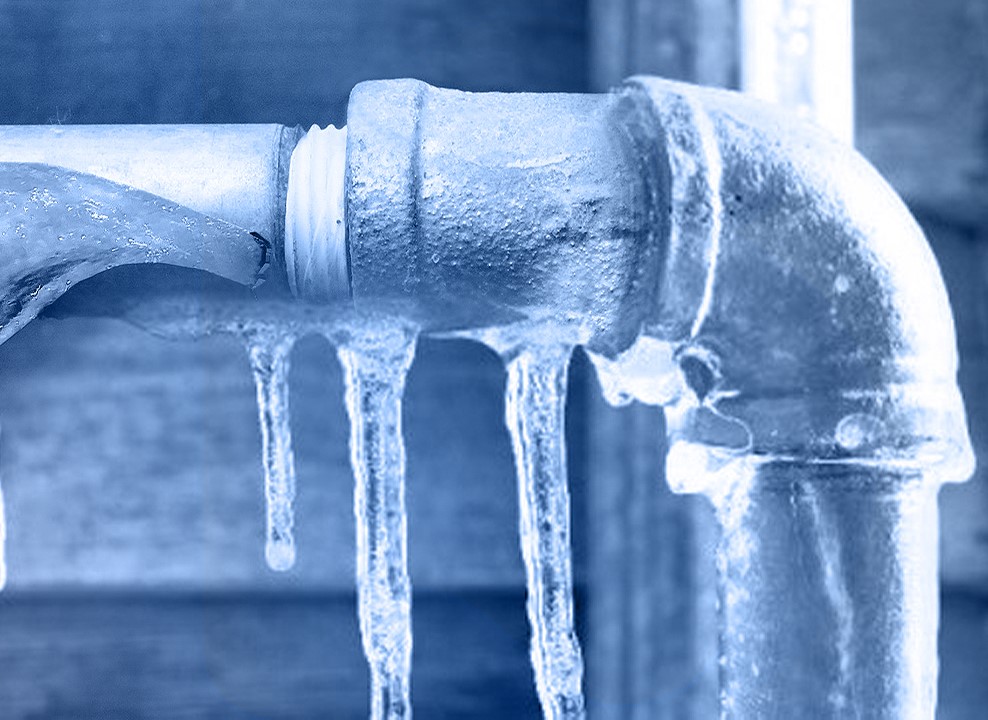Protecting Your Pipes from Freezing Issues: Essential Approaches
Protecting Your Pipes from Freezing Issues: Essential Approaches
Blog Article
They are making several great points relating to How to prepare your home plumbing for winter weather in general in this article directly below.

Winter can wreak havoc on your pipes, especially by freezing pipelines. Right here's how to prevent it from happening and what to do if it does.
Intro
As temperature levels decline, the threat of icy pipes rises, potentially causing costly repair work and water damage. Comprehending just how to stop frozen pipes is important for homeowners in chilly climates.
Prevention Tips
Protecting at risk pipelines
Wrap pipes in insulation sleeves or utilize heat tape to secure them from freezing temperatures. Concentrate on pipelines in unheated or exterior areas of the home.
Heating strategies
Maintain interior rooms adequately heated up, particularly areas with pipes. Open cabinet doors to enable cozy air to flow around pipelines under sinks.
Exactly how to recognize icy pipes
Search for lowered water flow from taps, unusual smells or noises from pipelines, and visible frost on exposed pipelines.
Long-Term Solutions
Architectural adjustments
Think about rerouting pipelines far from outside wall surfaces or unheated areas. Add additional insulation to attic rooms, basements, and crawl spaces.
Updating insulation
Purchase high-grade insulation for pipes, attic rooms, and wall surfaces. Proper insulation aids preserve regular temperatures and lowers the threat of frozen pipelines.
Protecting Outside Plumbing
Garden pipes and outside taps
Disconnect and drain yard tubes prior to winter months. Install frost-proof spigots or cover exterior faucets with shielded caps.
Understanding Frozen Pipelines
What triggers pipelines to ice up?
Pipelines freeze when subjected to temperatures listed below 32 ° F (0 ° C) for prolonged periods. As water inside the pipes freezes, it expands, taxing the pipe walls and potentially creating them to burst.
Dangers and problems
Frozen pipelines can cause water system disruptions, residential or commercial property damage, and costly repair work. Ruptured pipes can flooding homes and cause comprehensive structural damage.
Signs of Frozen Water Lines
Determining icy pipes early can prevent them from bursting.
What to Do If Your Pipes Freeze
Immediate actions to take
If you believe icy pipes, keep faucets open up to relieve pressure as the ice melts. Use a hairdryer or towels soaked in warm water to thaw pipes slowly.
Final thought
Protecting against icy pipes requires positive measures and fast reactions. By comprehending the causes, signs, and safety nets, home owners can secure their pipes during cold weather.
6 Proven Ways to Prevent Frozen Pipes and Protect Your Home
Disconnect and Drain Garden Hoses
Before winter arrives, start by disconnecting your garden hoses and draining any remaining water. Close the shut-off valves that supply outdoor hose bibs and leave the outdoor faucet open to allow any residual water to drain. For extra protection, consider using faucet covers throughout the colder months. It’s also important to drain water from any sprinkler supply lines following the manufacturer’s directions.
Insulate Exposed Pipes
Insulating your pipes is an effective way to prevent freezing. Pipe insulation is readily available at home improvement stores and is relatively inexpensive. Pay close attention to pipes in unheated areas such as the attic, basement, crawl spaces, or garage. Apply foam insulation generously to create a buffer against the cold. You can also wrap your pipes in heat tape or thermostat-controlled heat cables for added warmth.
Seal Air Leaks
Inspect your home for any cracks or openings that could let in cold air. Seal any holes around the piping in interior or exterior walls, as well as the sill plates where your home rests on its foundation. Additionally, make sure to keep your garage door closed unless you’re entering or exiting. Leaving it open creates a significant air leak that can lead to frozen pipes.
Allow Warm Air Circulation
During cold snaps, it’s essential to allow warm air to circulate evenly throughout your home. Leave interior doors ajar to promote better airflow. Open kitchen and bathroom cabinets to help distribute heat consistently around the rooms. If you have small children or pets, be sure to remove any household chemicals or potentially harmful cleaners from open cabinets for safety.
Let Faucets Drip
A small trickle of water can make a big difference in preventing ice formation inside your pipes. When temperatures drop significantly, start a drip of water from all faucets served by exposed pipes. This continuous flow helps prevent the water from freezing. Additionally, running a few faucets slightly can relieve pressure inside the pipes, reducing the chances of a rupture if the water inside does freeze.
https://choateshvac.com/6-proven-ways-to-prevent-frozen-pipes-and-protect-your-home/

As an enthusiastic reader on Preventing and dealing with frozen pipes, I figured sharing that segment was smart. Liked our write-up? Please share it. Let someone else locate it. Thank you for taking the time to read it.
Schedule And Pricing Report this page